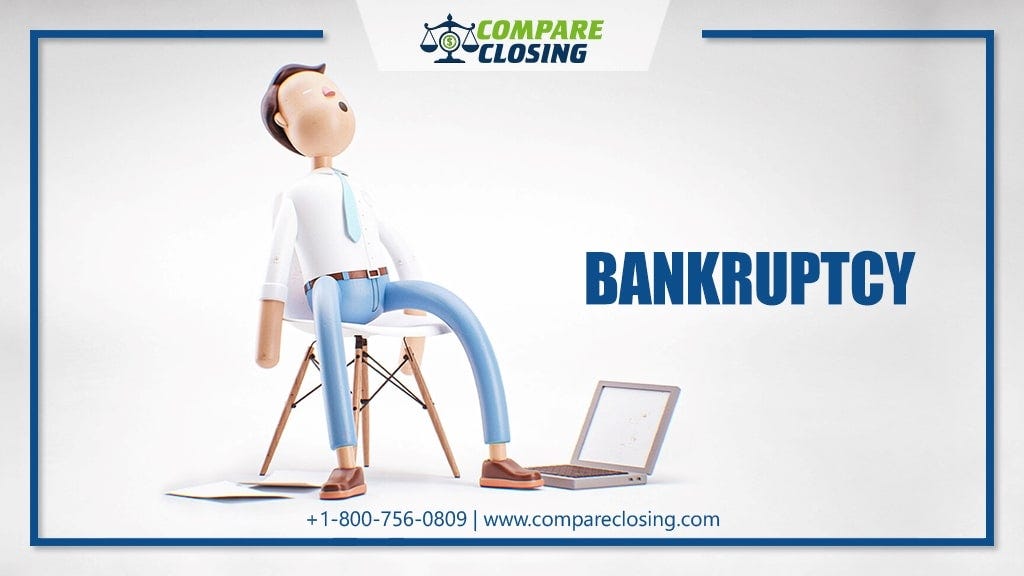
About Bankruptcy
Financial difficulty can occur in anyone at any time, especially in times like these. During the pandemic, many people lost their jobs and had no secondary or passive source of income to continue their lively hood.
Not only individuals but many organizations also took a huge hit in their business. In such situations, many companies and individuals choose to file for bankruptcy.
In this post, we will understand what is bankruptcy in detail.
What Is Bankruptcy?
Bankruptcy is a legal process in which a debtor has an option to discharge all his debts in case of financial difficulties such as sudden loss of job, or business shutdown.
In the event the debtor is unable to pay his/her debts, they can file for bankruptcy.
Once in the process of bankruptcy, the creditors would not make any attempt to collect the debts from the debtors or file a lawsuit against them.
With some exceptions, the creditors may not have any claim on the debtor’s future income or assets.
By filing for bankruptcy, many individuals and organizations can get their debts discharged, usually by liquidating assets, putting liens on properties, extra time for repayment of debts, etc.
What Are Different Types Of Bankruptcy?
I — Chapter 7 Bankruptcy:
Chapter 7 bankruptcy is one of the most common chapters that individuals, businesses, and families file under.
Chapter 7 bankruptcy is also known as the liquidation chapter in which the U.S. trustee appoints a chapter 7 trustee who ensures to check if the debtor is likely to have any assets under his/her name so that they could be liquidated and the funds could be used to pay off the creditors.
The bankruptcy process of chapter 7 takes less time compared to any other chapters in bankruptcy.
In chapter 7 the creditor would not be able to make the payments of the debts every month. This chapter helps the creditors to discharge unsecured loans such as payday loans, credit cards, and personal loans.
When it comes to companies, they would not be able to discharge the debts in chapter 7.
To file for chapter 7 bankruptcy, an individual or the family must go through what is called a “MEANS TEST.”
The means test looks at overall household income for your family size earned over the last six months and compares it to the median household income for family size in each county in the particular state.
If the individual or family’s income is below the median income, you have passed the MEANS TEST.
However, if the household income is higher than the median income, you might want to check with your attorney for other options. However, an organization is not subject to the MEANS TEST.
In chapter 7 the creditors may have to surrender the assets that they own. For example, if you have an investment in real estate that would be considered a non-exempt asset and the trustee would be selling that to pay off your debts.
II — Chapter 13 Bankruptcy:
In chapter 13 bankruptcy the creditor will have to make payments with having the flexibility to be able to make those payments. Every individual circumstance differs from one another.
Your situation is going to determine how this type of bankruptcy is going to work out for you.
Before filing for Chapter 13 bankruptcy, you might want to understand and let your attorney know whether or not you have any assets of any value like a real estate property or any collectibles.
Let’s say that you are behind on your mortgage payment where you haven’t paid for several months and the bank wants fifteen thousand dollars in a one-time payment to get current. You went through some financial difficulty that caused you to fall behind.
You are now back on your feet where you can now afford the regular payment but you don’t have the fifteen thousand dollars. In such a case, a chapter 13 bankruptcy allows you to catch up with your mortgage over a three or five-year period depending on your income and household size.
This option is unavailable in chapter 7. The same applies to any other type of secured debt like getting current on your property taxes or the condominium dues.
III — Chapter 11 Bankruptcy:
Chapter 11 bankruptcy is one of the most complex bankruptcies and yet the most powerful chapter of all other chapters.
Chapter 11 can be sued by individuals, families, and businesses. Other chapters like chapter 13 have limits on the amounts of debts creditors can have.
If the debt amount is higher than the limits set for chapter 13, then the creditor has an option to file the bankruptcy under chapter 11. Many of the big organizations use chapter 11 to reorganize their debts.
In chapter 11 the debtor is treated as debtor-in-position, where the owners of the organization are allowed to continue to operate the company.
The debtors have to prepare a plan that creditors have an option to either accept or reject the plan. The debtor also has to submit a disclosure in which the debtor will be informed about the business operation with the plan to reorganize the payments on the debts.
This disclosure will help the impaired class of credits and the court to make an informed decision when they vote on the plan.
Conclusion
Filing for bankruptcy is a big decision to make for a business or an individual. When you file for any type of bankruptcy, your credit score gets affected and it may take years to get to a reputable score.
When you file for bankruptcy, it reduces your chance to enjoy credit benefits in the market for some time. It is suggested to find any other options to pay off your debts and keep bankruptcy as a last resort.
https://www.compareclosing.com/blog/what-is-bankruptcy-and-its-types/
Comments
Post a Comment